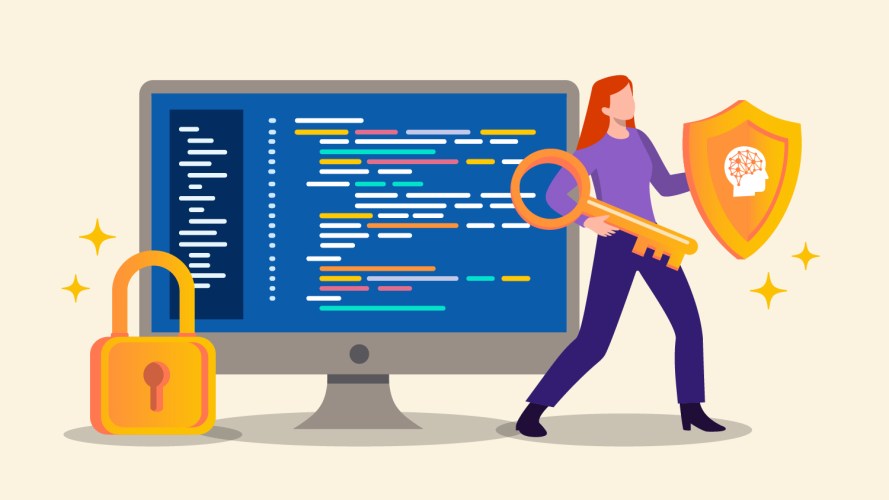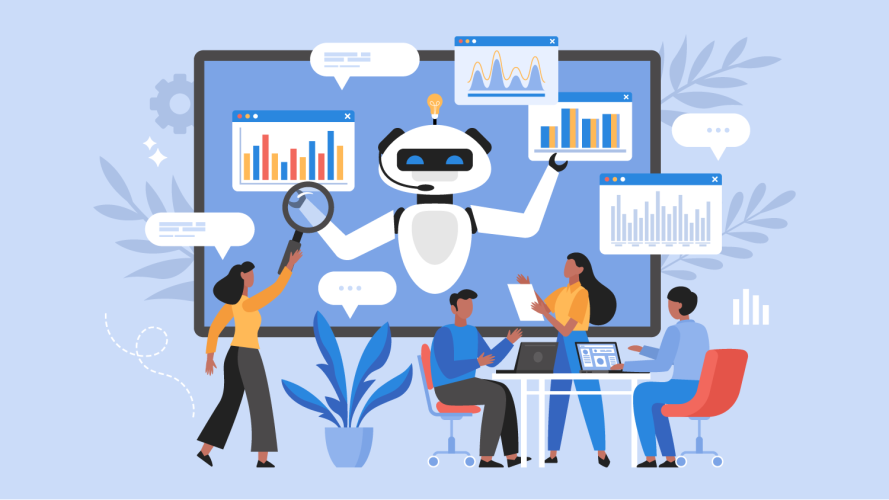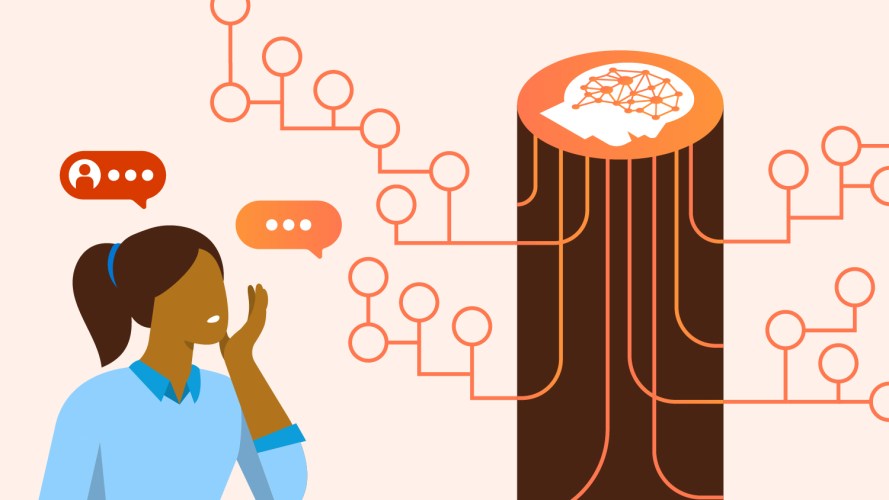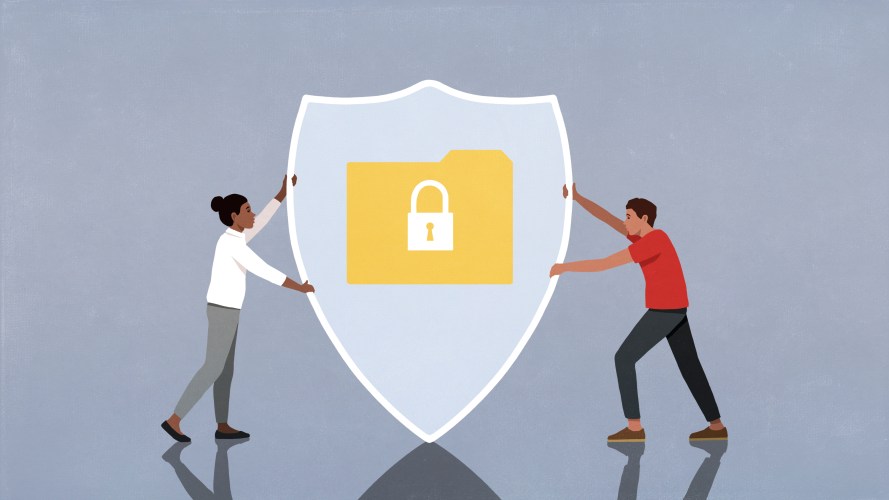What is Cybersecurity? Your Guide to Digital Defense
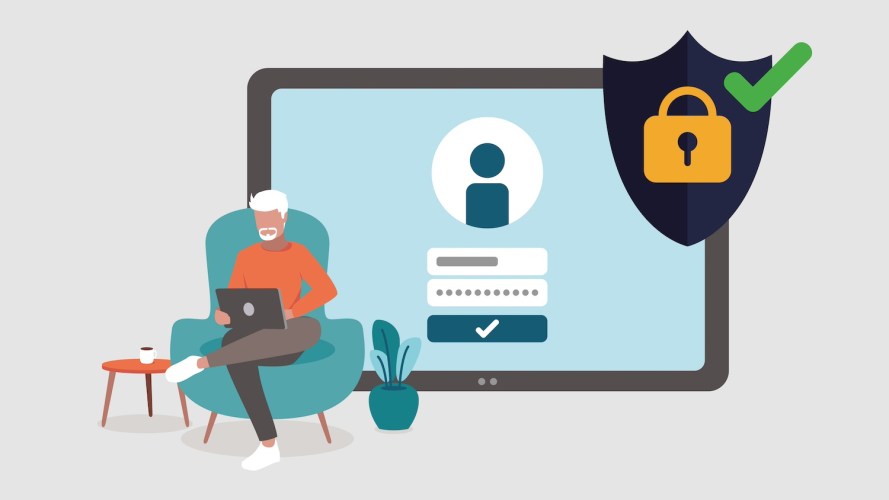
A strong cybersecurity strategy makes sure that both your technology and your employees remain vigilant. Here's how you can stay safe.

Amanda Lane
The term cybersecurity brings to mind hackers huddled in dimly lit rooms, eyes glued to glowing screens, breaching digital fortresses and pilfering sensitive data.
However, the reality of cybersecurity is far more complex and nuanced. While threats can indeed stem from cunning con artists, they also come from inadvertent employee errors. In fact, the three primary ways in which cybercriminals can access an organization are stolen credentials, phishing, and exploitation of vulnerabilities.
Let’s define cybersecurity and how it works, then you’ll learn ways you can build a better digital defense within your company.
- What is cybersecurity?
- How does cybersecurity work?
- Why is cybersecurity important?
- The benefits of cybersecurity
- Different types of cybersecurity
- Different types of cybersecurity threats
- How is AI used in cybersecurity?
- Securing the future, byte by byte
Get serious about cybersecurity
Learn how you can safeguard your company against digital threats by ensuring your data is secure and protected first. Our handy guide breaks it all down clearly.



What is cybersecurity?
Cybersecurity is an organization’s defense against the constant ambush of digital threats. It serves as a shield against online criminals, manipulation, and deceit from both internal and external threats.
Cybersecurity is about more than just keeping your data safe. It’s about protecting your business and reputation. Investing in good security measures ensures your organization remains resilient and trustworthy.
How does cybersecurity work?
Your physical office space might have boundaries, but the digital world? It’s seemingly limitless, and unfortunately, so are the threats. With every custom application, cloud service, customer account, proprietary technology, and remote work log-in, your risks multiply.
That’s why having a strong cybersecurity strategy is key. By combining technology and human vigilance, you’re securing data and protecting the core of your business.
Robust protocols include deploying technology that:
- Encrypts, masks, or anonymizes sensitive data
- Controls access to sensitive data
- Quickly detects and responds to incidents
- Constantly audits cybersecurity practices
- Allows for swift data recovery from any breach
- Adheres to regulatory compliance standards
While technology is the backbone of your defense, the real secret weapon is your people. Your workforce plays a crucial role in this digital battle, but only when they’re equipped and trained with the right skill sets and tools. By addressing cybersecurity skills gaps, you can empower your employees to actively shape the shield that protects your organization.
Think of it this way: when your team knows the game, they’re less likely to be deceived and make simple errors that could lead to breaches. Because cybersecurity threats are constantly evolving, it’s important that your teams remain vigilant and that daily tasks, such as software updates, become critical safeguards.
Why is cybersecurity important?
Much like securing your physical office against intruders, it’s important to do the same for your digital assets. Cyberattacks are raising many red flags, with projected damage reaching $10.5 trillion in 2025. That’s not just a number — it’s a wake-up call.
Several key factors are behind this staggering increase:
- Remote and hybrid employees working on insecure Wi-Fi networks or cloud storage solutions with their personal devices.
- Expanding digital footprints, opening up new vectors for hackers to exploit.
- Insufficiently vetted third-party vendors and suppliers’ cybersecurity risks, which introduce unknown hazards to your organization.
- Savvy cybercriminals who adapt their practices to the new cybersecurity solutions that are being deployed.
Cybersecurity isn’t a luxury. It’s a lifeline for businesses. As the digital world can be both a treasure trove and a minefield, cybersecurity is increasingly vital to safeguarding an organization’s information and reputation.
The benefits of cybersecurity
Simply put, the benefit of cybersecurity is to keep your data safe. A comprehensive cybersecurity strategy will protect your organization’s valuable data from theft and manipulation, including your own intellectual property and your customers’ personal and financial information.
When you have strong cybersecurity practices in place, you can:
- Maintain business continuity by quickly recovering from external attacks and internal human errors.
- Protect your brand reputation and customer trust in the market.
- Maintain compliance with cybersecurity rules and other regulatory requirements aimed at protecting confidential information.
The bottom line: effective cybersecurity practices can ward off cybercriminals and protect your assets, customers, and brand.
Different types of cybersecurity
Much like how the locks on your physical office protect your property, your goal for cybersecurity is to protect your data. Common cybersecurity best practices include:
1. Firewalls & network segmentation
Firewalls create digital barriers that are designed to prevent unauthorized access to your networks and data.
Network segmentation hides portions of your network behind secured, virtual lockers. If a cybercriminal breaks into part of your network, they can’t access others. It’s like a locker room for your digital data.
2. Encryption & data masking
Encryption encrypts sensitive data into unreadable text. Like a secret code, encrypted data can only be read by those who know how to decrypt it. Encryption offers security to personally identifiable information and sensitive, confidential, or proprietary data.
Data masking, or data obfuscation, substitutes original data with modified content. For instance, it can secure your test environment by replacing sensitive data with dummy data.
3. Virtual private networks
When remote employees are connected to a virtual private network (VPN), their laptops and other devices are granted secure access to your networks, leaving them less vulnerable to attacks.
4. Anti-malware software
Anti-malware software is designed to stop, identify, and eliminate any malware, or malicious software such as computer viruses or worms, from your systems.
5. Security information and event management
Security information and event management (SIEM) helps companies identify and address potential security threats and vulnerabilities before they have a chance to disrupt business operations. The software constantly scans your systems for warning signs of cyberattacks, promptly notifying you of potential threats.
6. Backing up, restoring, and deleting data
The ability to regularly back up and restore your data gives you control and provides a vital safeguard against ransomware attacks and other threats. With regular data backups, you can protect your enterprise against data loss and corruption, ensuring uninterrupted operations and peace of mind.
Data minimization, or removing data from storage, reduces the risks associated with a data breach. Because how can someone hack data that does not exist?
7. Identity and access management
Identity and access management (IAM) tools are essential components of cybersecurity for large enterprises. These tools provide a robust framework for managing and securing user identities, controlling access to critical resources, and ensuring the confidentiality, integrity, and availability of sensitive data.
Key IAM functionalities include user authentication, authorization, as well as role-based access control. They help organizations enforce strong password policies, implement multi-factor authentication, and streamline user provisioning and de-provisioning processes. IAM solutions enhance security by reducing the risk of unauthorized access and insider threats, ultimately safeguarding a company’s digital assets, and ensuring regulatory compliance.
All these crucial cybersecurity measures are essential to building a strong defense. But adopting these solutions is more than a one-and-done exercise. Regular updates and patches are essential to stay ahead of the latest data security hazards.
And, as always, robust cybersecurity protocols rely on ongoing workforce training, so employees know how to protect your organization as threats evolve.
Different types of cybersecurity threats
Digital thieves, fraudsters, con artists, and hackers all have one goal, like modern-day magicians. But instead of pulling rabbits out of hats, they are pulling tricks to steal your digital secrets.
And when it comes to specific cybersecurity threats, three primary concerns remain top of mind among IT leaders: phishing, ransomware, and denial-of-service (DoS) and distributed denial-of-service (DDoS) attacks.
1. Phishing
Phishing is when cybercriminals cast hooks into the digital ocean, hoping to catch an unwitting victim who opens a malicious email or clicks on harmful links, inadvertently downloading malware.
When spearphishing, their efforts are more targeted, crafting their email or other outreach to a specific individual and posing as a trusted colleague or contact.
2. Ransomware
Ransomware is a type of malware that prevents access to a computer system by encrypting it. Attackers require victims to pay a costly ransom to unlock their own information.
3. DoS and DDoS attacks
Denial-of-service (DoS) and distributed denial-of-service (DDoS) attacks involve disrupting networks by overwhelming them with requests. As a result, it’s difficult or near-impossible for legitimate users to access them.
4. Insider reach
Insider breaches can occur accidentally or intentionally when an employee or authorized individual exposes your systems to an attack.
An accidental breach can happen, for example, when an employee’s laptop is stolen from their car, granting the thief access to their work information.
An intentional breach takes place when a malicious employee within the organization purposely infects a network, allows entry for other cybercriminals, or shares proprietary information.
5. Supply chain attack
Your own data management security may be on point, but are your third-party vendors? Supply chain attacks take place when hackers discover holes in your vendors’ security practices and, through those openings, infiltrate your networks to cause harm.
How is AI used in cybersecurity?
With more and more businesses adopting AI tools, it’s important to note that this technology poses new risks and challenges for cybersecurity. You should implement robust data protection measures that can keep up with the ever-evolving digital landscape.
On the other hand, AI plays a pivotal role in automating cyberattack detection and response efforts. As the number of threats continues to grow, AI tools can continuously scan networks for cybersecurity threats, devise solutions, and act swiftly to protect sensitive data before it’s compromised. In this high-stakes game, knowledge is truly power.
Workforce automation tools that detect and assess threats through AI can help bridge the gap created by a shortage of 3.4 million cybersecurity experts globally.
Securing the future, byte by byte
As our digital networks and online landscapes continue to grow, cybersecurity practices must adapt to protect the sensitive and mission-critical information that organizations manage.
With cybercriminals becoming more sophisticated and regulatory expectations on the rise, the role of emerging technologies like AI and machine learning takes on more importance. These tools will help monitor the expanding threat landscape and adjust to emerging dangers.
But the human element is just as important. That means everyone from your IT team to your everyday employees, suppliers, and partners. We all need to be well-versed in the risks and actively uphold cybersecurity best practices.
In this dynamic digital world, the collaboration of technology and human vigilance is our best defense against the growing specter of cyber threats.
Start boosting your data security today
Want to learn more about how you can secure your data, from development through production? Join us for a webinar to see how you can build customer trust and avoid costly data breaches.








